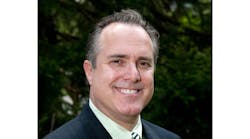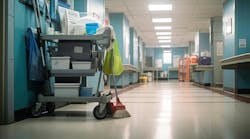Green cleaning has been around for 20 years and has had an enormous impact on the way schools clean. It is so commonplace that some question whether it is still relevant.
Although today the discussions relative to green cleaning may lack the fanfare of just a few years ago, it appears to still be doing very well to the point where it has become mainstream. For example, the state of Kentucky recently passed legislation on green cleaning in schools, and it is already the second state this year to do so. (Vermont passed legislation in January.) What also makes this an amazing accomplishment is the fact that little is getting done these days by politicians at either the state or federal level. Yet, politicians were able to agree on green cleaning.
Green cleaning has moved successfully from an exciting new trend that manufacturers, distributors and service providers used to differentiate in the marketplace, to one that is in the mainstream. And along with this has been a reduction in the marketing, advertising and other bravado …. Thus it might not be getting as much media attention.
Furthermore, interesting parallels and "lessons learned" can be gained by comparing today’s green cleaning movement with the Cleaning for Health Movement in the mid 1990s. Although that movement highlighted the importance of cleaning as a "low-cost health intervention strategy," little of substance changed in the cleaning industry. This is not a criticism of the Cleaning for Health Movement, but objectively there were few if any laws passed that related to cleaning in schools or universities; product manufacturers didn’t reformulate their products; third-party standards weren’t established. This failure to achieve lasting and tangible results helped shape the strategy that would make the green cleaning movement last and have lasting relevance.
Today, there are laws specifically targeting green cleaning in schools in 12 states; multiple independent third-party certifiers have developed standards for chemicals, paper, equipment, liners and other products; new products have been developed with ties to green cleaning, including chemical-free cleaners; non-profit organizations have emerged to work specifically on green cleaning issues (e.g., Green Cleaning Network, Healthy Schools Campaign and Practice Greenhealth); and the U.S. Green Building Council and its LEED Rating System has helped to codify greener practices at every level.
As to the future, schools and universities can expect innovations from product manufacturers, as well as from a process perspective focused on continually improving training on what custodians can do to further reduce the environmental impacts of the buildings in which they work. For example, process improvements will increase the focus on actions, products, processes that reduce energy, water, waste and consumption in general (including cleaning supplies), as well as what custodial organizations can do to reduce transportation impacts, including that of individual custodians going to and from work. This will happen while improving cleanliness, protecting vulnerable occupants and without increasing costs.
Finally, as the green cleaning movement continues to move toward more sustainable cleaning (going beyond just the environmental impacts of the products and processes), it will begin considering how janitors are compensated and trained, their opportunities for advancement and other issues to add greater professionalism to the industry and ensure that custodians who put in an honest day’s work can afford to feed their families, put a roof over their head, afford to send their kids to the universities where they work, and provide the basic necessities of life.
Has green cleaning become irrelevant? The facts simply do not support this—as the best and perhaps most important work is still ahead.
Ashkin is executive director of the Green Cleaning Network, a 501(c)3 not-for-profit educational organization.


